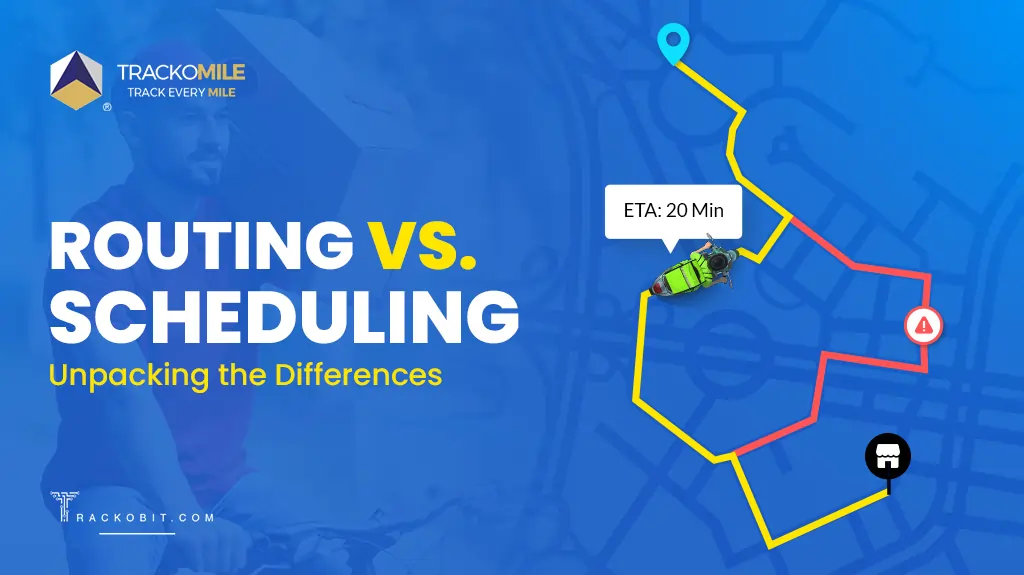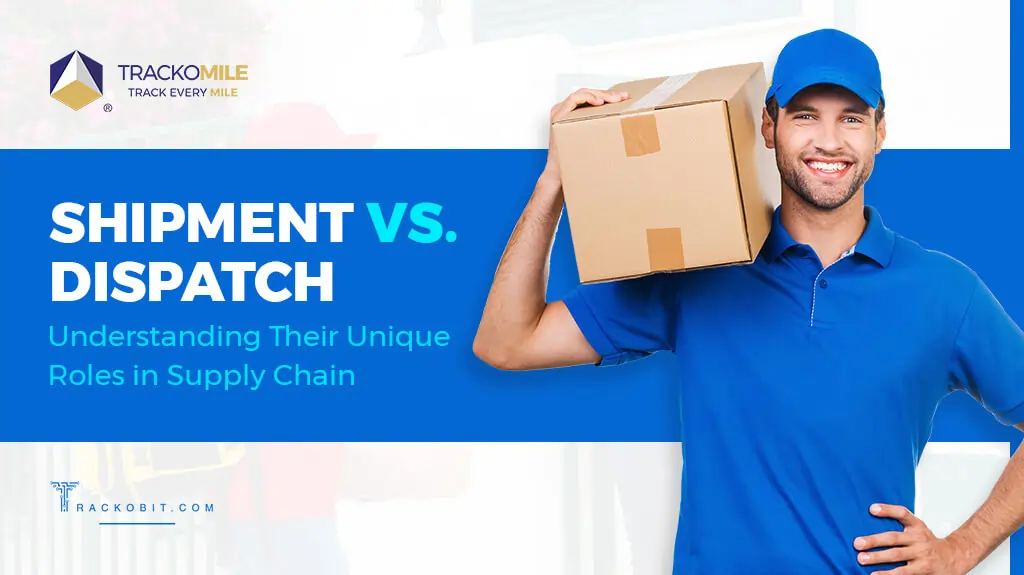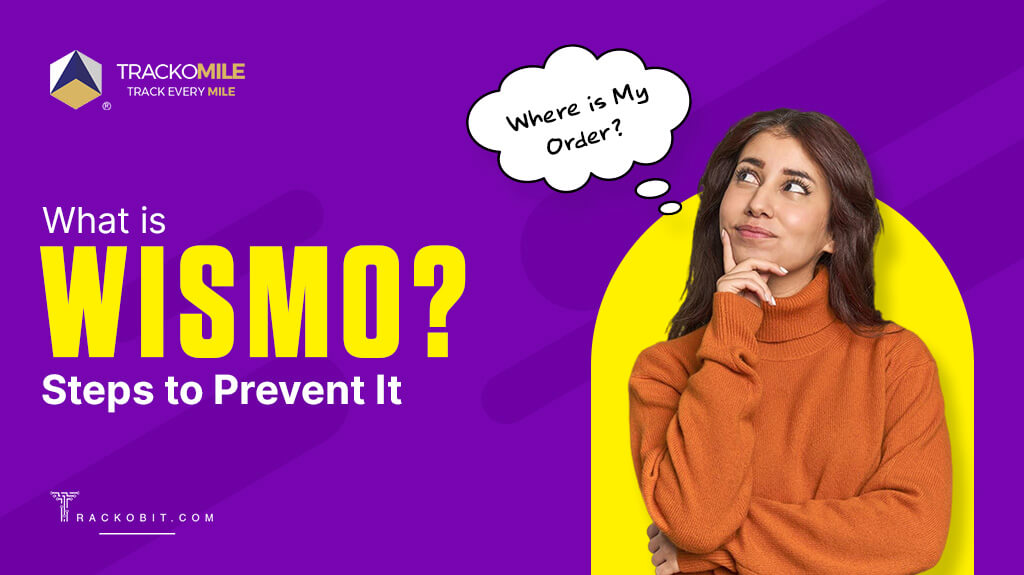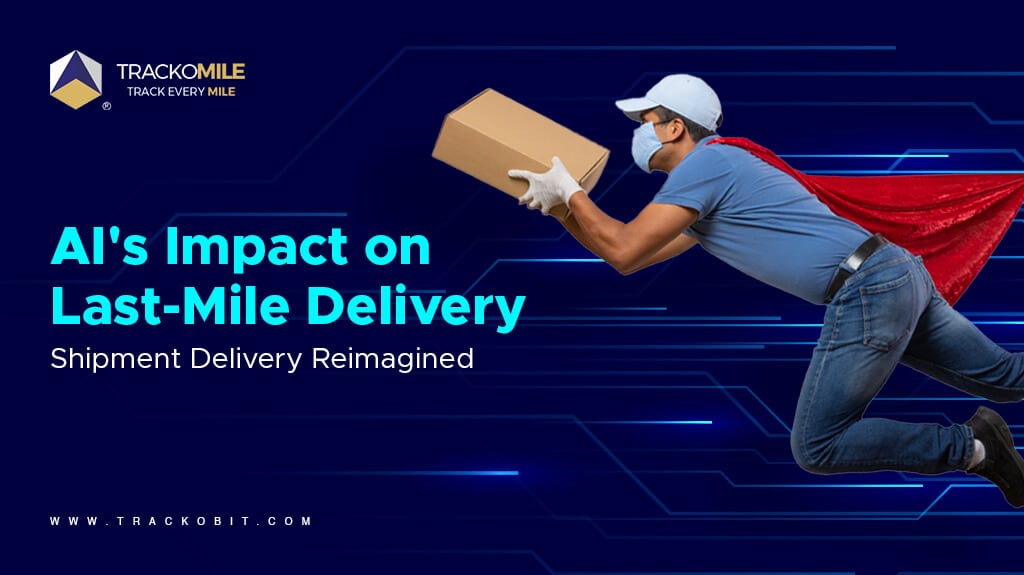-
TrackoBit
Manage commercial vehicles with the new-age Fleet Management Software
TrackoBit -
TrackoField
Streamline your scattered workforce with Field Force Management Software
TrackoField -
Features Resources
About Us
Get to know TrackoBit: our team, ethos, values, and vision.Careers
Join the most dynamic cult of coders, creatives and changemakers.Tech Support
Learn about our technical support team and services in detail.Events
Check out the exhibitions where we left our marks and conquered.
Contact Us
Connect with us and let us know how we can be of service.
Last-Mile Tracking: Characteristics, Advantages, & Examples
- Author:
- Read Time:9 min
- Published:
- Last Update: June 18, 2024
Categories
Table of Contents
ToggleCategories
- Field Sales And Service
- Telematics
- TrackoBit
- Task and Workflow
- Miscellaneous
- GPS Software
- Lead Management
- Fleet Management
- Leave And Attendance
- Video telematics
- TrackoField Industries
- Route Planning
- TrackoMile
- Driver Behaviour
- Last Mile Delivery
- Asset Tracking
- Dispatch Management
- Fuel Management
- Route Optimisation
- Electric Vehicle
- Roster Management
- Vehicle Tracking
- TrackoMile Industries
- TrackoBit Industries
- More
- Sensor Integration
- Topical
- GPS Trackers and Hardware
- Tech and Beyond
- TrackoField
- What's New
- Employee Management
- Company
The challenges faced by last-mile delivery managers have remained the same over the years. They face challenges in planning a path that engages customers while providing value at every turn and in understanding how last-mile tracking can support them.
Table of Contents
Toggle
The emergence of digital technologies has empowered consumers. The contemporary consumer is conscious of their demands and has the know-how to use resources like information and tools to meet them effectively. As a result, the quality of the customer experience now has a greater influence on sales, thus shifting the balance of control.
According to a MetaPack poll, over 90% of consumers prioritize delivery when purchasing online. Additionally, buyers are increasingly choosing solutions with quick and same day delivery. According to a different Deloitte survey, 63% of consumers are willing to pay more for same-day delivery.
By contrast, 96% of respondents are prepared to pay extra for choices that offer speedier delivery, such as same-day delivery. These figures highlight how important it is for companies to provide prompt, effective last-mile tracking to satisfy customers and obtain a competitive advantage in the marketplace.
What is Last-Mile Tracking: The Basics
Last-mile tracking, also known as last-mile delivery tracking, is the process of monitoring and overseeing the last segment of the supply chain. From the moment the delivery package leaves the fulfilment or distribution centre until it reaches the customers’ doorsteps, it may be followed in real time and minute by minute here.
Every stakeholder participates in it, including dispatchers, manufacturers, and—most importantly—consumers. This implies that packages are monitored from the moment they depart the shipping point until they arrive at the consumer’s destination. In the last phase of the delivery process, end-to-end visibility is intended to be provided.
Not only does real-time visibility help efficiently manage large-scale delivery operations, but it also ensures that the orders find their way to the customers in time, keeping them happy. Its benefits for the business, as well as the consumer, are too many to count.
4 Characteristics of Last-Mile Tracking
-
Notifications about Shipments
As part of this service, customers receive information regarding the real-time location of their orders. These notifications inform customers about the dispatch of an order from the distribution centre, when the delivery agent picks it up, and when the delivery agent is expected to arrive.
-
Real-time Tracking
Real-time tracking for last-mile delivery provides precise location updates, estimated arrival times, and live maps. By keeping everyone informed throughout the delivery process, this helps enhance transparency, customer satisfaction, and operational efficiency.
-
Proof of Delivery
It also involves generating proof of delivery. The delivery agents generate the same by taking an image or signature or asking for a one-time password shared with the customers. This helps reduce the chance of fake deliveries.
-
Contact Information of Delivery Agent
The delivery agent’s contact details, including his name and contact number, are shared through the last-mile tracking facility.
What is the Aim of Last-Mile Delivery Tracking
Companies that want to guarantee the safe delivery of goods and monitor the movement of their inventory must use last-mile tracking. Last-mile carrier tracking technologies offer end-to-end insight and try to minimise theft and improve delivery routes.
This visibility is achieved through a combination of internal last-mile carrier tracking for businesses and last-mile tracking for customers, which industry leaders have identified as an emerging business requirement.
Successful last-mile businesses need to offer internal delivery options for companies and shipping visibility for consumers. By managing logistics providers’ and customers’ visibility requirements, last-mile tracking helps businesses enhance customer happiness and optimise their supply chain.
Last-mile tracking is a vital component of logistics companies in today’s consumer-driven industry, enabling them to fulfil growing demands for prompt and dependable delivery. Therefore, last-mile tracking must be given top priority for firms to stay competitive in the market.
Read Blog – 10 Strategies For Improving Last Mile Experience
Benefits of Last-Mile Delivery Tracking
The last-mile delivery industry is expected to expand at a compound annual growth rate (CAGR) of 14.78% between 2021 and 2026, making investing in technologies that satisfy customers’ growing demands imperative. But there are more justifications for implementing last-mile tracking systems in your company than only this expansion pattern. Including last-mile tracking in your company plan has the following advantages:
1. It helps to reassure customers and build trust
Delivery anxiety is a common issue in e-commerce, as clients worry about the progress of their online orders. Delivery anxiety is typically caused by inconsistent post-purchase contact from the retailer, and customers begin to question the caliber of the delivery method as a result.
Brands may increase their delivery confidence by investing in last-mile delivery tracking and notifying customers regularly. This will result in better overall satisfaction and a greater chance that customers will choose to make additional purchases from you.
2. Improves the brand experience and perception
Your brand may suffer if a package is lost in transit or reaches its destination later than expected. Customers don’t view it that way, even if shops have little control after FedEx, USPS, or DHL handle an order. Consumers frequently hold companies accountable for problems with order fulfilment, even when the merchant isn’t at fault.
As a result, modern customers expect the store to take care of any problems that occur within the last mile of delivery.
With comprehensive shipment monitoring data, businesses can anticipate problems and take action before they become more serious. This translates to a better delivery experience and contented customers.
3. Decreased customer support issues
The most often asked question by customers to e-commerce support personnel is, “where is my order?” without a doubt. As a result, customer service representatives are overworked and unable to devote enough time to handling more complicated issues due to the volume of requests for order or delivery status information.
Real-time package tracking software is the best self-service option for clients who want to control their experience after making a purchase. Your support staff will receive fewer questions when they can independently verify an order’s estimated time of arrival, which frees up more time for other duties.
![]()
4. Reduce order fulfilment disputes and chargebacks
Chargebacks can occur for legitimate causes, even though they are typically linked to e-commerce fraud. Customers are free to file a chargeback, for instance, if they place an order and are not given a tracking number or an anticipated day of delivery.
It is in your best interest to minimise chargebacks by providing order tracking information, either via the shipping provider or tracking technology embedded in your website. Excessive chargebacks can negatively impact a business’s relationship with its bank.
How Does Last Mile Tracking Help with Conquering Visibility?
Today’s consumers place a growing emphasis on delivery process transparency, and last-mile tracking systems are crucial in enhancing this aspect. Customers want to be able to follow a package from the time it is shipped until it reaches their door.
Supply chain procedures are streamlined, becoming easier, quicker, and more structured as a result. It improves transparency by offering several advantages, including:
- Monitoring fleet or driver activity to ensure timely delivery and identify any issues that arise.
- Predicting and preventing theft or pilferage, providing real-time alerts for any unusual activity.
- Planning efficient routes to optimize delivery times and reduce transportation costs.
- Real-time billing and invoicing allow businesses to track and manage their shipping expenses accurately.
- Quick customer feedback enables companies to respond promptly to questions or concerns.
It’s Going Down: Bring Down Shipping Cost with Delivery Tracking
Last-mile tracking offers insightful information about historical trends, helping companies make well-informed decisions that lower operating costs without significantly adjusting their logistical procedures.
Companies can track the routes their fleet drivers drive and determine driving, idle, and traffic patterns. Equipped with this data, businesses can employ route optimization to lower delivery times and fuel expenses, resulting in substantial long-term cost reductions.
Additionally, decreasing customer complaints and questions and ultimately raising customer satisfaction contributes to improving the last-mile delivery process overall. Real-time delivery updates can help customers cut down on missed deliveries and waiting times while improving their overall experience.
By offering electronic delivery confirmation, last-mile tracking systems reduce the need for extra paperwork and help create more accurate delivery records. Reducing the amount of physical storage space needed for delivery confirmations can also help organisations cut down on the time and expense of document management.
![]()
Examples of Businesses that Benefitted from Last Mile Delivery Tracking
Some of the businesses known to have benefited by employing the last mile delivery tracking service are as follows:
Amazon
The largest example here is the eCommerce company. Using sophisticated last-mile delivery tracking, Amazon has increased customer confidence. This instrument, which guarantees on-time deliveries and reduces overall delivery costs, has also increased its productivity.
DHL
DHL has included technology such as mobile applications, IoT devices, and GPS to enhance its delivery process. The organisation possesses in-house logistics technology that furnishes instantaneous shipment location updates, guaranteeing prompt delivery of merchandise while curtailing associated expenses.
Domino’s Pizza
The company optimises its delivery routes using mobile applications and GPS. It also has an internal tracking system that improves client satisfaction and helps guarantee on-time delivery.
Choosing TrackoMile’s Last-Mile Tracking Solution
Customers can receive real-time tracking links from TrackoMile’s last-mile tracking software, which updates them on the progress of their order delivery at every stage of fulfilment. This allows you to simply meet customers’ expectations by creating a smooth and frictionless delivery experience.

Gain visibility and control of delivery operations
Gain visibility and control of your delivery operations with TrackoMile’s last-mile delivery software. TrackoMile offers real-time tracking, route optimization, and automated notifications, ensuring timely deliveries and improved customer satisfaction. Address exceptions like unscheduled halts and deviations all in a single dashboard and provide the customer with the exact ETA and order status.
Make Better Decisions with the Rider App and Roster
Make better decisions with TrackoMile’s Rider App and Roster with daily order management, route navigation, and real-time communications, while the roster feature helps efficiently schedule and manage drivers. Riders can collect payments and multi-format digital proof of delivery, making the delivery process seamless. Meanwhile, dispatchers access on-ground execution data from the app to track driver activities in real time to manage exceptions and stay ahead of SLAs.
Empower Customers with Real-time Tracking
Thanks to TrackoMile’s final mile delivery system, which creates order tracking links with accurate anticipated times of arrival (ETAs), your clients will be able to track and monitor their delivery progress in real time. Implementing this functionality gives your clients a better delivery experience and boost their trust in your logistics processes.
Conclusion
Last-mile businesses need trustworthy tracking technology to guarantee precise last-mile tracking. This is necessary to improve user experience and track the shipment’s whereabouts in real time. Accurate information regarding the shipment’s location allows for the potential resolution of problems that might occur in transit. Customers can also choose when they want their orders delivered. According to research, about 21% of consumers are reluctant to purchase from platforms without an order monitoring feature.
Numerous last-mile tracking systems are available on the market. However, TrackoMile tops all of them because of its 99.9% accuracy in real-time tracking data. The provided data is without any discrepancy or lag time. Expect very little downtime and additional features such as route optimisation, rider scheduling, and more besides ETA sharing and POD collection.
Tithi Agarwal
Tithi Agarwal is a content writer at TrackoBit. She enjoys writing blogs which are knowledgeable yet fun to read. And when she is not typing away to glory she has her nose buried in books.
Related Blog Test
-

Routing and Scheduling: The Key Differences
Tithi Agarwal 30 August 2024Are you confused between “routing” and “scheduling,” and are you looking for ways to have the best of both worlds? Why not opt for routing and scheduling software that optimizes business operations?
-

Difference Between Dispatch And Shipment
Tithi Agarwal 27 August 2024Shipment and dispatch are two common supply chain terms that play a huge role. However, they are also the terms people confuse and use interchangeably the most. Let’s eliminate the confusion.
-

What is WISMO? Unsolving the Mystery
Tithi Agarwal 22 August 2024Reduce WISMO (Where Is My Order) calls and save valuable time and resources by providing customers with real-time order tracking links. This simple solution equips them with the necessary information, minimizing unnecessary inquiries.
-

AI in Last-Mile Delivery: 12 Transformative Ways Shipments Reach Customers
Tithi Agarwal 7 August 2024Buckle up because you are stepping into the future: the adoption of AI in the last mile delivery. With its help, you can ensure almost free and same-day delivery to customers.
Thank you for reaching out! We'll speak to you soon.
In the meantime, why not find out more about us, explore our products, or visit our blog?
Stay Updated on tech, telematics and mobility. Don't miss out on the latest in the industry.
Cookie Consent
We use cookies to enhance and personalize your browsing experience. By continuing to use our website, you agree to our Privacy Policy.






























